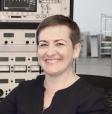
The characterisation of planetary materials
ANSTO provides a range of capabilities using neutrons, X-rays and infrared radiation to study the solids, liquids and gases that might be found in materials in our solar system and beyond.

Showing 661 - 680 of 1160 results

ANSTO provides a range of capabilities using neutrons, X-rays and infrared radiation to study the solids, liquids and gases that might be found in materials in our solar system and beyond.

Role at ANSTO
Investigators from UNSW and ANSTO have provided insights into the dynamic interactions of atoms in a promising material for sodium-ion batteries.
A sparrow with 257 parts weighing more than 29 tonnes arrives safely at ANSTO
Australian and New Zealand Society of Nuclear Medicine recognises Nigel Lengkeek

A neutron reflectometer for vertical samples.
New researcher joins human health team to focus on role of acquired immunity in preventing disease
ANSTO’s own meteorite hunter, who is also a planetary scientist and instrument scientist Dr Helen Brand took part in an expedition led by Professor Andy Tomkins of Monash University that has found the largest meteorite strewn field in Australia since the famous Murchison meteorite event in 1969.
With all excavation completed and rock removed from the underground site, the physics lab will now be built within the caverns of the Stawell Mines site.

On the 9th of December 2022, the Minister for Industry, Science and Technology provided his Statement of Expectations to ANSTO.

The role of trace elements as palaeoclimate proxies has been explored in ANSTO-led collaborative environmental research.
Researchers based at Monash University and the Swedish Museum of Natural History have pioneered the use of nuclear imaging techniques at ANSTO’s Centre for Neutron Scattering to resolve long-standing problems in plant evolutionary history linked to wildfires.
ANSTO has been measuring and characterising fine particle pollution from key sites around Australia for more than 30 years. This data set provides records from 1998 to 2019 of the concentration of 12 elements present in fine airborne particulate matter from an air sampling station located in Mayfield in Newcastle, NSW.
Access to a ‘window into the cell’ with University of Wollongong cryogenic electron microscope at ANSTO.
Environmental scientist with a passion for fieldwork and a lifelong commitment to scientific excellence
ANSTO facilitating coordinated effort to find the nexus that leads to chronic kidney disease of unknown origin